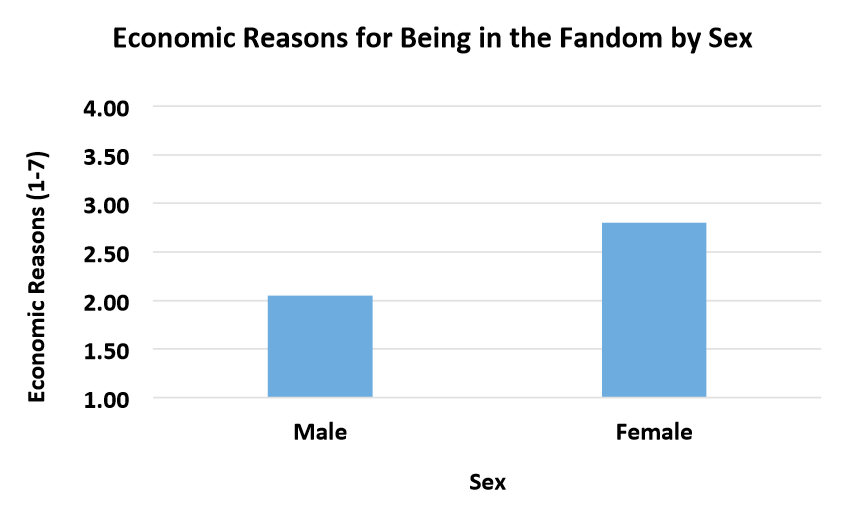Given that the furry fandom is predominantly male,1 the fandom itself may be seen by female furries as a male space. In fact, one study found that 81% of women in the fandom considered perceived it to be a “boys club.”2 Whether explicitly stated or not, a male-dominated space may be perceived as unwelcoming for women, despite the fandom’s values of openness and inclusivity. Based on prior research on norms, which has found that women often feel unwelcome or repelled from predominantly male areas (e.g., mathematics, computing science, or engineering), it may be possible that one of the reasons the fandom remains so male-dominated is the perpetuation (through the presence of implied norms, rather than explicit, organized, or intentional behavior) that the fandom is a male space. With this in mind, we are interested in testing whether female furries feel that the fandom is a male space and whether this reduces the extent to which they feel they belong in the fandom.
One hypothesis arising from this theorizing is that female furries may need a way to “get their foot in the door” as a way of “validating” their presence in the male-dominated fandom. There is evidence to support this idea: while 90.5% of female furries indicated that their own interests in furry played a major role in their decision to become involved in the fandom, 45.0% also indicated that a relationship partner played a major role in introducing them to the fandom, while 57.1% indicated that a friend introduced them into the fandom.3 Other data4 suggest that women are significantly more likely than men to say that they are in the fandom for financial or economic reasons, implying that they are artists or vendors—which coincides with data showing that artists in the fandom are far more likely to be female. 5
When asked about their identification with the furry fandom, women did not differ significantly from men with regard to how long they had been in the fandom for, how strongly they identified with their fursona, or with how strongly they identified as a furry. Taken together, these data suggest that, for all intents and purposes, women seem to be about “as furry” as men in the fandom. In the language of fan psychologists, they are comparable to men with regard to “fanship”—being an enthusiastic supporter of the content of a fandom.6
The evidence also shows that, despite being comparably “furry” however, women are less likely than men to feel a sense of “fandom”—feeling a sense of kinship with others sharing the same fan interests.7 The data suggest that female furries are more likely to identify with other female furries than with other male furries. Given that there are fewer female furries than male furries in the fandom, this may lead women to feel less of a sense of belongingness to the fandom. In fact, women reported feeling less like a member of the furry community, and were more likely to desire friends outside of the furry community and to retain aspects other, non-furry cultures, than men, who were more likely to want to immerse themselves completely in the furry fandom.8
In sum, men seem to be more likely to feel a strong sense of belonging in the furry fandom, to the point where they feel little need to look outside the fandom for friends or other needs. In contrast, females experience less of this, perhaps in part because the fandom may seem less welcoming to them, or less like a place that fulfills their social needs entirely.9


Recent Comments